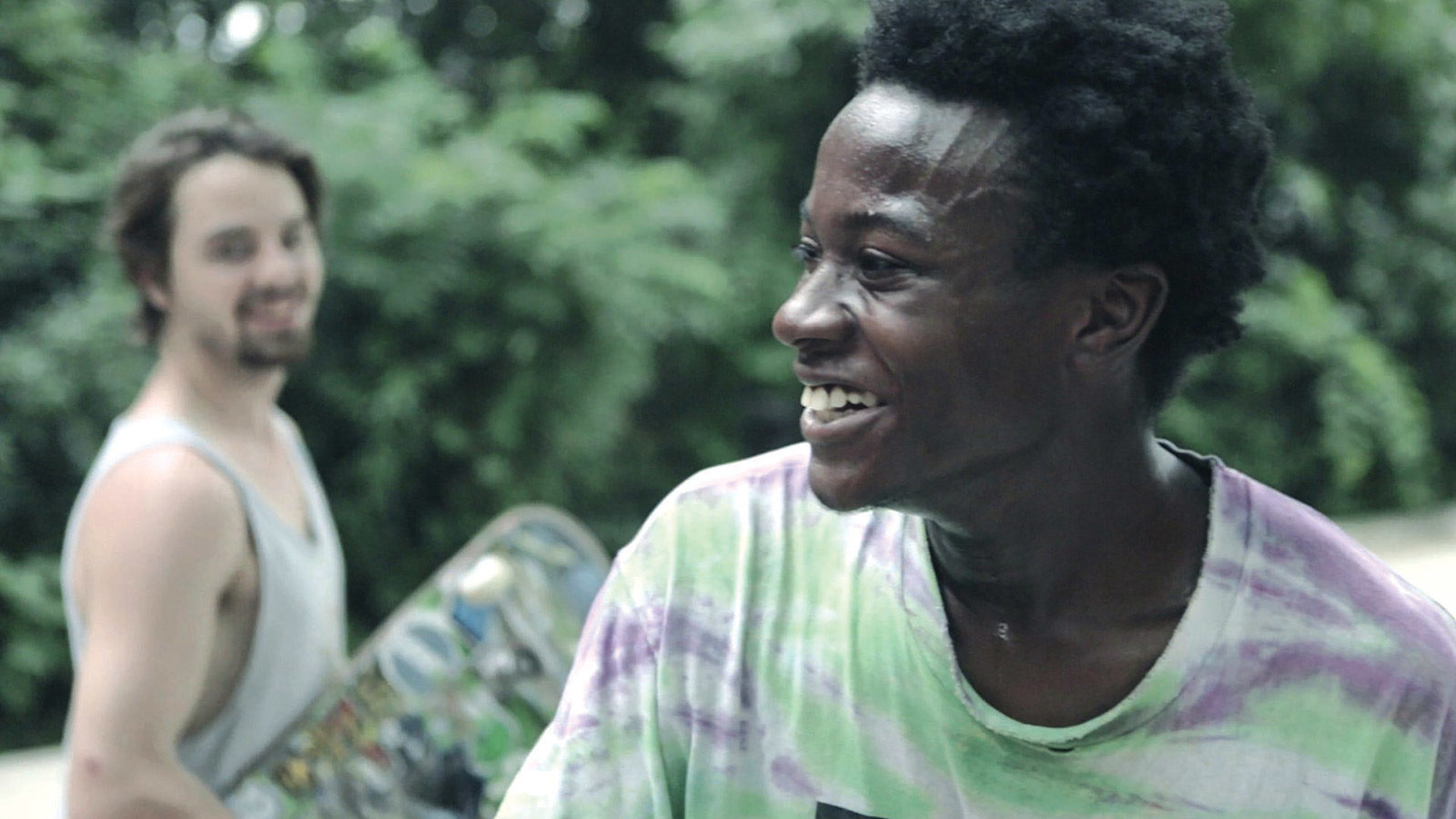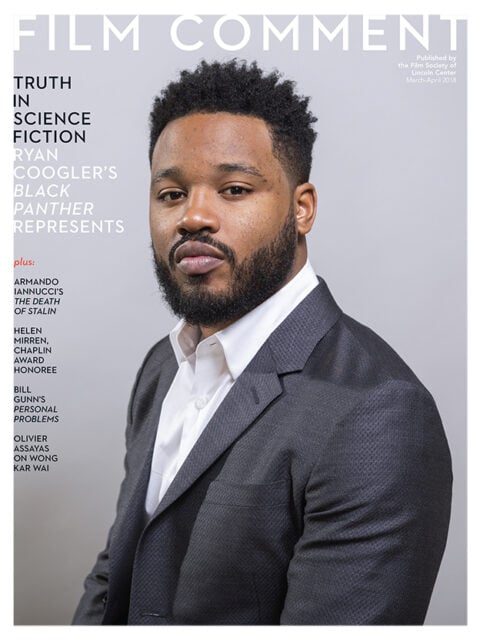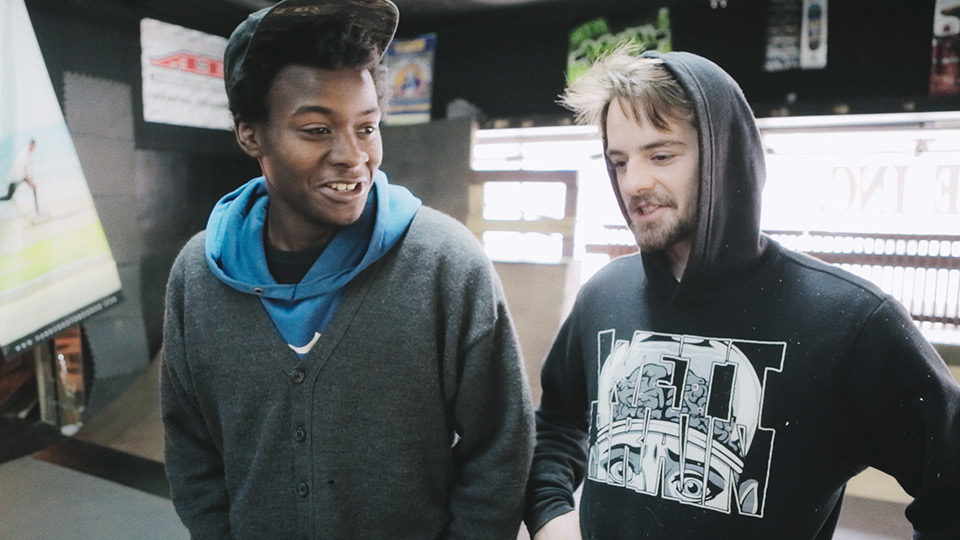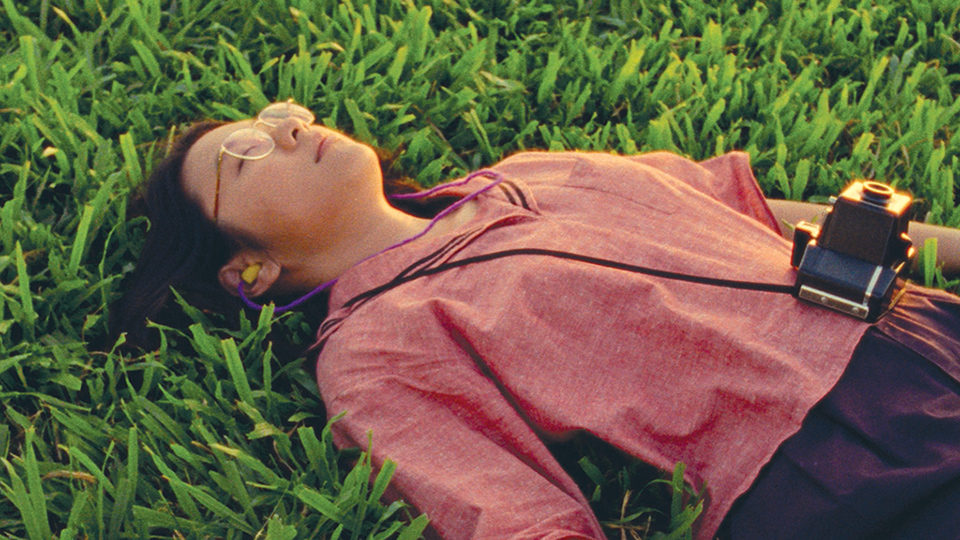By Eric Hynes in the March-April 2018 Issue

All Things Reconsidered
Revisited and reshaped, old footage fuels new reflections in two Sundance documentaries
Film footage always belongs to the past, whether it was shot a century, a week, or five minutes ago. What enlivens footage, and makes it current regardless of age, is the series of decisions over shaping and presenting it. Such is a foundational alchemy of filmmaking: filming turns the present into the past, then editing turns it into a new kind of present. But something else can transform footage, something related to but also divergent from time: our feelings. Time progresses, as do we, as does the filmmaker—yet these progressions don’t happen at the same rate, or in the same way.

From the March-April 2018 Issue
Also in this issue
The audience’s distance from documentary footage may be determined by chronology or familiarity (with the time, place, milieu, etc.), whereas other factors often mark the distance for a filmmaker who was also present. For the audience, older footage can approximate or even manufacture a memory of whatever’s been captured, while a witness’s actual, personal memories—of the footage and of the experience surrounding it—are also present, as are any feelings harbored about those memories, whether they’re acknowledged or not, articulated or not, sought or not. Some films seek to downplay or obscure this noise. Others tune in.
All of which is often the terrain of the first-person documentary. Yet it’s a terrain shared by outward-facing, even investigative films that nevertheless cop to a degree of personal investment, experience, or subjectivity. In one especially rich subset, a filmmaker’s relationship to the material is defined by distance from it, allowing for it to be repurposed toward a new, previously unforeseen end. Such retooling makes the footage newly functional—racking focus beyond itself—while also inviting a kind of objectification of it as an extant, densely ambiguous record. That was the case for an unreservedly personal film like Tarnation (2003), in which Jonathan Caouette repositioned home movies and diaristic direct address footage within a reflective present-tense portrait of his own emergent sexuality and complex relationship with his struggling mother. It also pertains to an ostensibly topical film like We Live in Public (2009), in which Ondi Timoner places footage she captured in 1999 during the radical social living experiment “Quiet” within a larger portrait of dot-com eccentric Josh Harris.

Minding the Gap
In Tarnation, Caouette’s uncompromising treatment of such personal material is what’s transformative, while in We Live in Public, Timoner’s lack of commentary on Harris, despite her own narration, only begs questions about her own experience and perspective. And in Steve James’s enduringly, richly troubling Stevie, iterative visits to the filmmaker’s onetime mentee in the Big Brother Big Sisters program keep redefining both their relationship and the footage previously captured. James invites the audience to encounter the struggling Stevie alongside him—empathizing, worrying, cringing, abdicating, reconsidering what was previously witnessed—while constructing the story and evaluating his own character from an emotionally unresolved point in the future.
James served as an executive producer on Minding the Gap, which took home a jury prize at this year’s Sundance Film Festival, and is another example of how time, distance, and changing context can turn a window onto the past into a mirror ball. First-time filmmaker Bing Liu marshals his own teenage skate videos into the first chapter in a durational portrait of three friends banded together in suburban Illinois. Long a co-conspirator in their group schemes, Liu refashions himself along the way into a proper chronicler, training his camera on friends Keire and Zack as they grow from 11 and 15 into their early and mid-twenties, respectively. Liu’s breadth of footage allows for a leap between a grinning, downy-cheeked, crashing-into-concrete Zack and his grizzled, buzzed older self changing his newborn child’s diaper, and between a fawning, simply-happy-to-be-there Keire and a more jaundiced young man reckoning with societal inequality and searching for wider horizons.
In some ways, they remain who they were at the beginning—a self-chosen family bonded together over their love of boarding and need for flight. But where, over time, Liu and Keire have begun to adapt to a shifting future—partly by confronting what’s behind them—Zack, despite encountering and causing the most disruption of the three, digs in his heels. Failing at running a skate club, struggling at being a responsible father, he’s found in a junked house without electricity. And it’s in relation to Zack that the film grows tense and uncertain.
After learning that Zack has been abusive to his girlfriend, Liu at first hesitates to confront his friend, before finally doing so on camera. The results are crushingly dispiriting. Liu handles this in two ways: by cutting between Zack and the testimony of his own mother, who suffered domestic abuse and is wracked with guilt over subjecting her son to it as well; and by lingering on footage of Zack in the present and in the past, watching with both empathy and sudden, deep, intractable ambivalence. The handling is uneasy, unresolved, and also heartbreakingly honest. The same person that Liu has been filming for a decade, heroicizing his every daring trick, exulting over his brash acts of rebellion, is also a reflection of the toxicity and trauma the filmmaker had sought to escape at home. He looks with love and revulsion, and these qualities of Liu’s gaze become defining of the film’s achievement. The people we’re close to—people both chosen and assigned—can be and become both monsters and men, lovable and irredeemable, victims and victimizers, and no amount of smart editing or story workshopping can make any of it reconcilable. The footage that makes up Minding the Gap remains raw and true to the end.

Shirkers
A fraught, epically ambiguous friendship is central to another Sundance prizewinner’s material journey into the past. With Shirkers, Sandi Tan (also a first-time filmmaker) revisits the long-lost footage from her unfinished narrative feature shot in Tan’s native Singapore in 1992, also called Shirkers, and in the process reckons with both why the film was never finished and how several relationships were forever changed in its wake. By employing Tan’s reflective voiceover throughout, Shirkers lines up with the first-person filmmaking tradition, offering up a conversational, frequently self-deprecating perspective on her younger exploits and efforts. But there are also fascinating notes of measured evaluation.
For starters, the footage is wildly delightful, evidence of what should have been a watershed contribution to Singapore’s independent film movement—of which Tan and her very young collaborators could have been leading voices. No amount of caustic self-criticism from Tan can dampen the thrill of witnessing the vibrancy and bounteous energy of everything captured within the frame. (In a more prideful moment, Tan admits to having felt strangely plagiarized—impossible as plagiarism would have been—when she saw the colors, costumes, and framings of Wes Anderson’s Rushmore, an uncanniness borne out by what Tan unveils.) The fact that the footage is only now viewable, and only within the confines of this documentary, freights every second with supplemental emotion and loss.
There’s also the story of how the footage has remained unseen, and why this form might remain its sole viable one. Without ruining the narrative, the uniqueness of which ought to be enjoyed unspoiled, suffice to say that the mystery of the film’s incompletion and the whereabouts of the footage centers on one of Tan’s collaborators, an older male mentor figure. Except that figure was also central to the making of those glorious images, serving as the film’s cinematographer and director. That fact, along with the fascinating, aggravating, life-defining tale that’s developed in the intervening years, which comprises this summational documentary film teeming with incident and personality, serves to cut against notions of outright sabotage or villainy.
Shirkers could have been a poison pen letter to a former friend, or a ghost story of both a film and friends lost to time. But instead it vibrates with ambivalence. Ambivalence over the footage. Ambivalence over the talents behind the scenes. Ambivalence between those who’ve remained in touch. And ultimately deep ambivalence toward a figure that many, perhaps some in the audience, can only regard with scorn. A more conclusive emotion can be useful for moving on from the past, but complex, contradictory feelings bring footage to life. The second we know exactly what to make of an image is the moment we can move on from it, too.
Eric Hynes is a journalist and critic, and curator of film at Museum of the Moving Image in New York.







